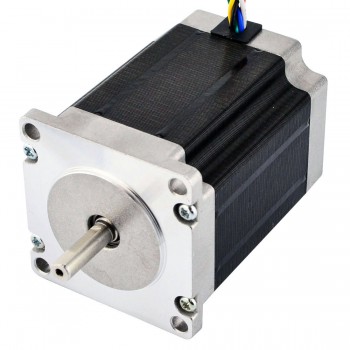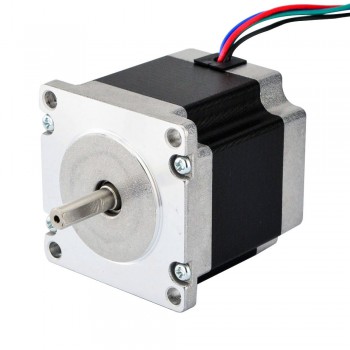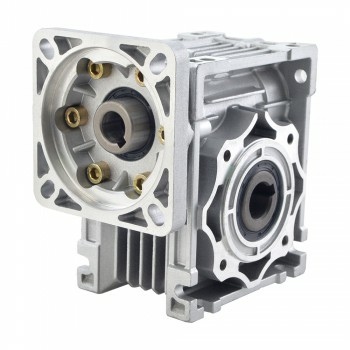1.Unipolar stepper motor
1.Principle
Unipolar stepper motors usually consist of two coils, each of which can control the direction of current to cause the motor to rotate. Unipolar stepper motors use a single drive signal to control the operation of two phases of the motor, so that the motor rotates at a certain step angle. The working principle is relatively simple. The phase is controlled by a single signal, so that the two coils are activated one after another to achieve rotation.
2.Advantages and Disadvantages
The advantages of unipolar stepper motors are that the control is simple and easy to implement, the cost is low, and the application fields with low precision are becoming more and more common. The disadvantage is that the torque is difficult to control and problems such as vibration and noise are prone to occur.
3.Applicable scenarios
Unipolar stepper motors are suitable for applications where torque requirements are not high, speed requirements are not high, and noise requirements are low. Such as consumer electronics, toys, clocks, etc.
2.Bipolar stepper motor
1.Principle
Bipolar stepper motors usually consist of four coils, each of which can make the motor rotate by adjusting the magnitude and direction of the current. The difference between a bipolar stepper motor and a unipolar stepper motor is that it requires two phases of drive signals to control. The two phases control the four coils of the motor respectively, allowing the motor to rotate at a finer step angle.
2.Advantages and Disadvantages
The advantage of the bipolar stepper motor is that it can control the step angle more accurately, the speed is relatively stable, and it has high torque. The disadvantage is that the control is more complicated and requires more complex drive circuits and control systems. Compared with unipolar stepper motors, the cost is higher.
3.Applicable scenarios
Bipolar stepper motors are suitable for scenarios that require high accuracy and speed, such as digital cameras, printers, scanners, etc.
In summary, different types of stepper motors can be selected depending on the application requirements. In practical applications, factors such as the motor's power, speed range, and load characteristics also need to be considered. Careful consideration is required when selecting a stepper motor.
Source:https://www.jiuniq.jp/containersDetail/edznmivboutxfz








